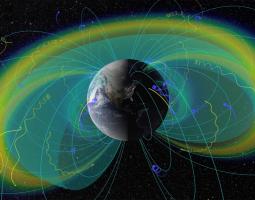What We Study
Earth moves through the heliosphere, the exotic outer atmosphere of a star. The space beyond Earth’s protective atmospheric cocoon is highly variable and far from benign. The Sun, our solar system, and the region of the galaxy just outside present us with a complex, interacting set of physical processes. It is the one part of the cosmos accessible to in situ scientific investigation, our only hands-on astrophysical laboratory.
NASA's Solar TErrestrial RElations Observatory (STEREO) satellites have provided the first three-dimensional images of the sun. For the first time, scientists will be able to see structures in the sun's atmosphere in three dimensions. The new view will greatly aid scientists' ability to understand solar physics and there by improve space weather forecasting.
Building on NASA’s rich history of exploration of Earth’s neighborhood and distant planetary systems, we are poised to provide a predictive understanding of our place in the solar system. We do not live in isolation; we are intimately coupled with the Sun and the space environment through Earth’s climate system, our technological systems, the habitability of planets and solar system bodies we plan to explore, and ultimately the fate of Earth itself. Variability in this environment affects the daily activities that constitute the underpinning of modern society, including communication, navigation, and weather monitoring and prediction. Because the space environment matters to humans and their technological systems both on Earth and in space, it is essential as a space-faring Nation that we develop an understanding of these space plasma processes.
Heliophysics research and exploration focuses on studying the Sun, the heliosphere, and planetary environments as elements of a single, interconnected system, one that contains dynamic space weather and evolves in response to solar, planetary, and interstellar conditions. Such an understanding represents not just a grand intellectual accomplishment for our times —it also provides knowledge and predictive capabilities essential to future utilization and exploration of space.





